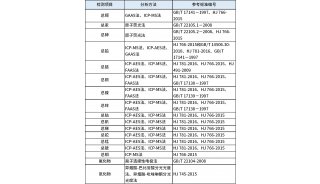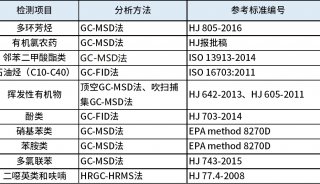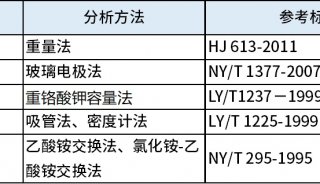W-Band Frequency-Swept EPR(三)
2. Results
2.1. EPR field-swept spectra
Figure 5 shows conventional field modulation W-band EPR spectra of the three samples used for the data reported here: 2,2,6,6,-tetramethyl-4-piperidone-1-oxyl (TEMPONE), 15N 3-carbamoyl-2,2,5,5-tetra-methyl-3-pyrroline-1-yloxyl (CTPO), and a 50%-50% mixture of 14N and 15N CTPO. All samples were aqueous, and all experiments were carried out at room temperature. All spectra in this paper were obtained using degassed samples [6] and 1 kHz magnetic field modulation to allow penetration of the field modulation into the solid Ag LGR that was used in these experiments [1]. The power level at the resonator was −10 dBm for these spectra. The receiver time constant was 50 ms for a and b, and 100 ms for c. Scan times were 0.69, 0.30, and 1.43 min for a, b, and c, respectively. Spectra a and c are single 50 G scans, and spectrum b is an average of 16 scans of 50 G.
W-band room temperature spectra of aqueous samples used in this study. Detailed information on sample preparation and resonator configuration are given in Refs. [3,6].
For frequency-sweep experiments on single isotope samples, the low field line was observed because of its greater intensity except as noted. It was centered on the frequency-swept ramp. For the 14N-15N CTPO mixture, the center of the ramp was set midway between the two low field peaks. Natural abundance 13C peaks from rotating methyl groups are evident on either side of the low field EPR lines but are less apparent for other lines. Motional narrowing of anisotropic interactions is less complete at W-band for the high field lines of these small molecules, resulting in lines of greater width and reduced intensity. At X-band, it is difficult to distinguish high and low field signal heights. The spectra of Fig. 5 allow an estimate of the rotational correlation time, although that is not our purpose here.
2.2. Triangular frequency-swept experiment
Figure 6 shows W-band frequency-sweep results with triangular waveforms. Results of a full wave sweep (up and back again) are shown in Figs. 6a–d and of a 1.5 wave sweep (up, back, and up again) in Figs. 6e and f. Full-cycle sweep rates of 5 kHz with 35 MHz deviation were used for Figs. 6a and b, of 50 kHz with 32 MHz deviation for Figs. 6c and d, and of 400 kHz with 25 MHz deviation for Figs. 6e and f. All data of Fig. 6 are the result of acquiring frequency-swept data on resonance that are subtracted from an equal number of 20 G offset acquisitions for improved baseline stability.
Representative triangular-sweep spectral responses for 0.5 mM TEMPONE. Sweep profiles are indicated at the bottom of each display. Figures 6a and b used 5 kHz waveforms of 35 MHz frequency deviation centered on the low field line. Figures 6c and d used ...
The experimental design is based on two ideas: elimination of the frequency-dependent reflection coefficient of the LGR as well as other components of the microwave circuit by subtraction of signals found on and off the magnetic resonance condition, and cancellation of the swept V-band frequency at the first downconversion mixer. Dispersion or absorption is selected by adjusting the phase of the 1 GHz local oscillator (Fig. 4). For this to be successful, the length of the V-band delay (Fig. 3) must be precisely set to preserve mode purity across the frequency sweep. The W-band EPR signal feeds through the LNA and then mixes with the frequency-swept V-band reference to arrive first at a stationary Q-band frequency. Further downconversion leads to a 1 GHz signal, which is detected.
Briefly, if the reference and signal incident on the W-band downconversion mixer are designated Arefcosωreft and Bsigcosωsigt, and A ≫ B, the output of the mixer is Bcos(ωsig − ωref)t. There is also a mixer product at cos(ωsig + ωref)t that is assumed to be filtered out. Here, the reference is the frequency-swept V-band signal, ArefcosωVt, and the signal is Bsig[(ωW(t)]cos[(ωQ + ωV)t + ϕsig{(ωW(t)}]. The mixer output is Bsig{ωW(t)cos[ωQt + ϕsig[ωW(t)]}, assuming that there is no differential phase shift between the V-band paths that feed the W-band upconversion and downconversion mixers (accomplished by the delay line in Fig. 3). The Bsig and ϕsig terms are functions of the instantaneous value of the W-band frequency during the frequency sweep. They could alternatively be expressed in terms of the complex value of the EPR signal and the resonator reflection coefficient. Since a rotating frame can be defined at Q-band, and also 1 GHz, absorption and dispersion can be detected.
Figures 6a and b show the absorption signal, with the only difference being that Fig. 6a was obtained at an incident power of −16 dBm and Fig. 6b at an incident power of −6 dBm. The linewidths are symmetrical and apparently little-changed comparing the data at the two incident powers. These are pure absorption spectra obtained by frequency sweep that are equivalent to the low frequency spectra seen by Stoner et al.[5] for the trityl radical at a very low microwave frequency of 250 MHz using magnetic field sweep.
Baseline subtraction was used to process the data of Fig. 6. A matched frequency-sweep data set was acquired about every second by stepping the current in the field modulation coils that surrounded the resonator. On- and off-resonance data sets were subtracted for baseline correction. A step of about 20 G was the maximum value that could be achieved with the hardware at hand.
There are a number of points to be made comparing Figs. 6a–f:
Figures 6a and b show imperfect baseline correction, with the signal-to-baseline ratio independent of incident power. Lineshapes were independent of power.
Figures 6c and d show the high field line of the spectrum rather than the low-field region usually observed in this study. The quality of absorption and dispersion spectra seem about the same. The lines show incipient FID effects, although the effects are small. Such effects could be seen more clearly on the high-field narrower line (data not shown).
The “early FID onset” regime seen in Figs. c and d does not seem to be advantageous because of apparent line broadening.
Figures 6e and f show wiggles that persist for about five or six cycles, about 0.6 μs. The oscillatory frequency seems to be increasing as the decay progresses. There is some indication that they persist into the beginning of the return of the triangular sweep.
Figures 6e and f were obtained at −6 dBm and 0 dBm, respectively. No significant difference in signal shapes were discerned. Figures 6a and b were obtained at −16 dBm and −6 dBm, respectively, and showed no significant difference in signal shapes. It is concluded that the shape of the response is insensitive to the microwave power over the range of incident powers used in this experiment (25 μW to 1 mW).
2.3. Trapezoidal frequency-sweep experiments
Figure 7 shows selected trapezoidal frequency-sweep experiments using 0.5 mM TEMPONE. The frequency-sweep waveform is shown in Fig. 1b and indicated qualitatively in each experiment of Fig. 7. The data indicate no spectral dependence of FID shapes on power.
Representative trapezoidal sweep responses for 0.5 mM TEMPONE obtained from using the waveform shown in Fig. 1b centered on the low field line. Sweep rates are 0.176 MHz/ns (equivalent to 3.8 kT/s). Figures 7a and c as shown are double-baseline corrected ...
Comparing Figs. 6 and and7,7, the maximum sweep rate is 7 times greater using the trapezoid, while a 1 μs plateau is about right for observation of the T2 decay. The use of a trapezoidal sweep permits independent selection of the desired ramp sweep parameters and the desired plateau, which is not possible when using a triangular sweep. Furthermore, a rotating frame can be defined in the coordinate system of the precession of the spins during the plateau time. Precession of the magnetization is at a constant frequency in this coordinate system.
It is interesting to note that the pure absorption responses in Figs. 6 and and77 have the same initial sense both with ramp-up and ramp-down, whereas the dispersion signals have opposite responses.
An additional baseline correction strategy was introduced for the trapezoidal sweep spectra of Figs. 7a and c. After the data were collected, the main magnetic field was shifted by 50 G and the acquisition sequence repeated in its entirety to obtain a reliable baseline reference. The spectra of Figs. 7a and c were produced by subtraction of the baseline data from the EPR signal data. The improvement is notable, leading to the conclusion that the 20 G offset used to provide baseline improvement as the data are collected is inadequate.
2.4. CTPO frequency-sweep experiments
Results of the experiments on CTPO samples are shown in Fig. 8. Figures 8a and b were obtained at −10 dBm incident power, 50 kHz triangular sweep, and 44.7 MHz deviation on the 15N isotope. They can be compared with Figs. 6c and d from TEMPONE, noting that the latter displays were obtained using a 32 MHz deviation. It is apparent in both the frequency-swept experiments and the EPR spectra of Fig. 5 that the CTPO linewidths are somewhat greater. This molecule exhibits exquisite spectral resolution at X-band that shows evidence of internal molecular motions [11]. At W-band, this resolution is not observed.
Representative swept-frequency responses for the CTPO samples. Figures 8a and b used 50 kHz triangular waveforms of 44.7 MHz deviation centered on the low field line. Figure 8e used 50 kHz triangular waveforms of 45.3 MHz deviation centered between the ...
Figures 8c and d show results from the 15N isotope using a trapezoidal 400 kHz sweep. The ramp was 0.25 μs duration and 36.7 MHz deviation. These displays can be compared with Figures 7c and d, which were at 44 MHz deviation. Here, the decay of the envelope of wiggles for CTPO is more rapid, indicating a shorter T2.
The EPR spectrum of a mixture of 14N- and 15N-CTPO is shown in Fig. 5c. Experiments reported here were designed to apply the methods established in the previous sections to sweeps of the microwave frequency across the two low field lines, one from each isotope. It was expected that the composite FIDs would allow determination of the spectral separation of these lines.
Figure 8e, with a 50 kHz triangular sweep at −10 dBm, looks very much like the pure absorption that would give rise to the derivative-like lineshape of Fig. 5c if field modulation were to be employed. Figure 8f clearly shows a more complicated decay arising from superposition of the magnetizations of both isotopes.
Figures 8g and h show absorption spectra from a low concentration sample (0.04 mM). The reference baseline strategy discussed above was applied to the data of Fig. 8g to produce 8h. It is apparent that the resolution is improved compared with Fig. 8f.
-
技术原理

-
并购


















